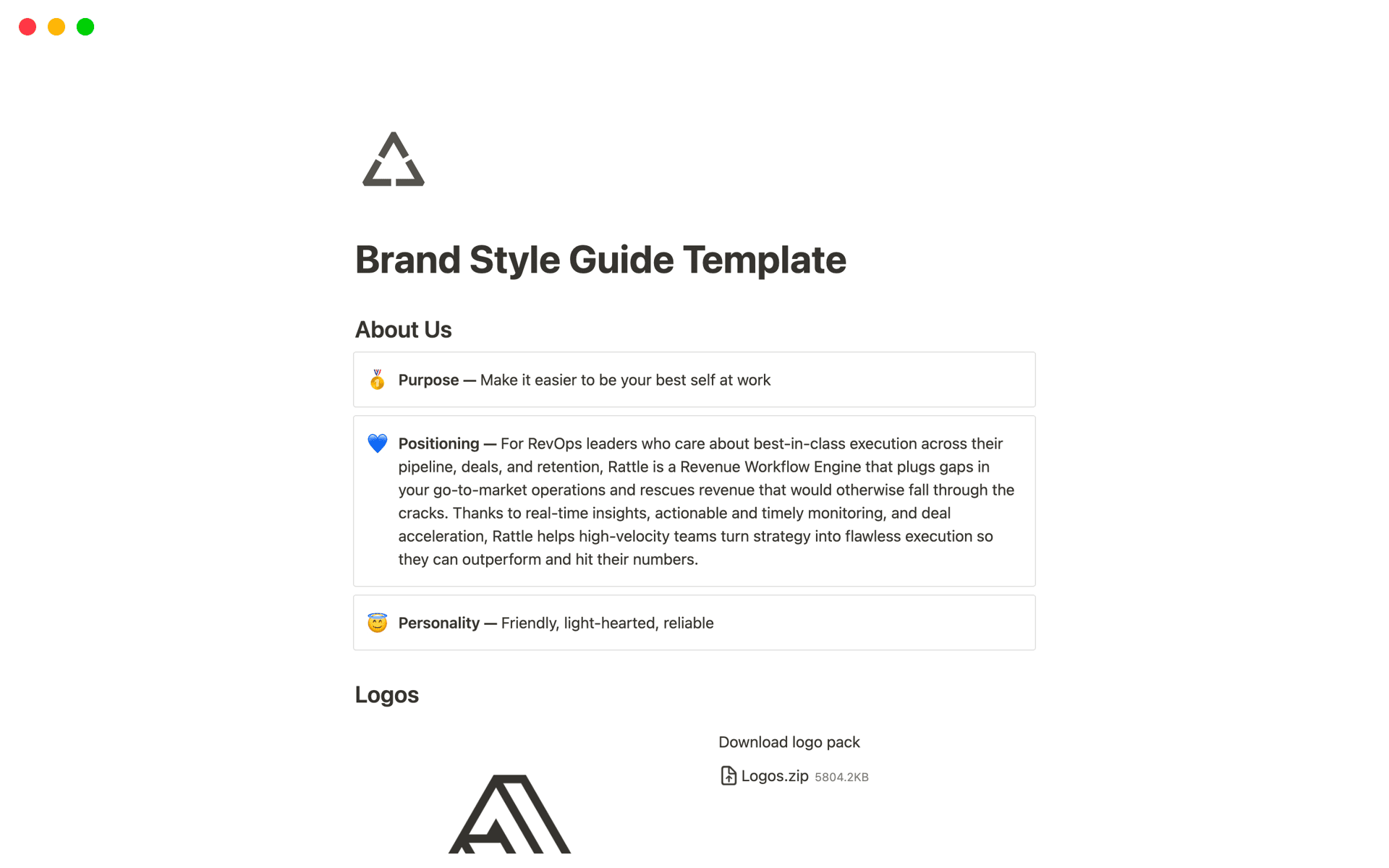For Art Directors, maintaining a cohesive visual and conceptual identity across projects is fundamental. A Brand Guidelines template encapsulates this necessity, laying out all essential brand elements such as colors, fonts, values, and visuals in a structured manner. It ensures consistency and coherence in brand presentation, which is key in establishing brand recognition and trust. Before embarking on creating your personal Brand Guidelines template, reviewing the offerings below can streamline your process and inspire your customization efforts.
What Should Brand Guidelines Templates Include?
Choosing the right Brand Guidelines template is crucial for maintaining consistency across your brand's visual and verbal communication. Here's what to look for in a top-notch template:
Logo Usage - Details on how to use the logo, including acceptable colors, sizes, and spacing around the logo to ensure it stands out appropriately.
Color Palette - A clear presentation of the brand's color scheme, including primary and secondary colors with specific color codes (RGB, CMYK, Pantone) to ensure accurate reproduction.
Typography - Guidelines on the specific typefaces to be used, their weights, and how they should be applied in different contexts (e.g., headings vs. body text).
Visual Style - Description of the overall aesthetic of the brand including photography style, iconography, and any other visual elements that define the brand's identity.
With these components well-defined, a Brand Guidelines template can serve as a cornerstone for all your brand's creative projects, ensuring consistency and coherence.
What Should Brand Guidelines Templates Avoid?
Choosing the right Brand Guidelines template is crucial for maintaining a cohesive brand identity. However, not all templates are created equal. Here are three key components to steer clear of when selecting your template:
Overly Complex Layouts: Avoid templates that feature complicated designs which can distract from the core brand elements. Simplicity in layout helps in maintaining focus on brand essentials.
Generic Color Schemes: Templates with non-customizable, generic color palettes can limit your ability to convey your brand's unique identity. Opt for templates that allow easy color modifications.
Fixed Font Selections: Steer clear of templates that do not offer the flexibility to change fonts. The ability to customize fonts is essential for aligning the guidelines with your brand’s voice.
Remember, the best template is one that offers flexibility and simplicity, enabling you to showcase your brand's unique traits without unnecessary clutter or restrictions.













